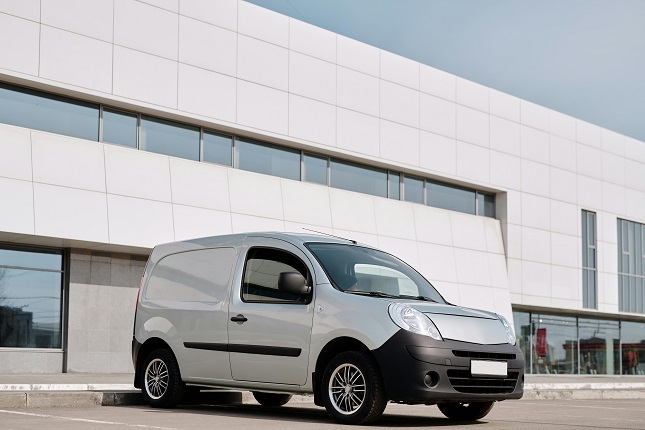Do you need to find the top insurance choices for your business vehicles?
Businesses that use vans require appropriate insurance coverage to protect their operations. You need proper insurance to protect your business assets whether you operate a single van or a fleet.
Many business owners lack complete knowledge about the van insurance options they can access. As a result of their limited knowledge about van insurance options many business owners receive inappropriate coverage while paying excessive premiums.
This guide will show you every essential detail about van insurance for businesses and explain how to select the best policy along with ways to get the most affordable rates.
What You’ll Discover
- Different Types of Van Insurance Coverage
- Specialized Business Van Insurance Options
- Factors Affecting Your Van Insurance Premiums
- How to Apply for Business Van Insurance
- Tips for Lowering Your Business Van Insurance Costs
Different Types of Van Insurance Coverage
Business van insurance offers multiple coverage levels for your vehicles. Selecting the appropriate van insurance requires understanding your business requirements and the ways you operate your vans.
Third-Party Only
The UK requires at least third-party only coverage for business van insurance. It covers:
- Damage to other people’s property
- Injury to other people
- Liability for passengers
But here’s the catch…
This insurance does not provide coverage for damages to your vehicle or its theft. When your van gets damaged or stolen you will need to finance the repairs or replacement out of your own pocket.
This option presents the lowest cost but may be inadequate for companies with essential reliance on their vans for everyday operations. Recent data shows that a mere 16% of businesses select this fundamental level of insurance coverage.
Third-Party, Fire and Theft
Businesses receive additional protection against theft and fire damage beyond basic third-party coverage with this insurance level. With this policy, you get:
- Everything included in third-party only
- Protection if your van is stolen
- Coverage for fire damage to your van
The middle-ground option becomes the preferred choice for many small businesses that are starting their operations. This middle-ground coverage option offers additional protection beyond the legal minimum without requiring the higher premiums associated with comprehensive coverage.
Comprehensive Coverage
The highest level of van insurance protection available which businesses should choose is comprehensive coverage. A comprehensive policy includes:
- Everything in third-party, fire and theft
- Your van receives coverage for damages which you caused through your own actions.
- Windscreen repair
- Personal belongings coverage (varies by insurer)
For businesses that rely on their vans for daily operations, comprehensive coverage from a trusted van insurance provider offers peace of mind knowing that you’re protected against most scenarios that could disrupt your business.
Specialized Business Van Insurance Options
Specialized insurance options exist beyond standard coverage levels to meet the unique needs of business van users.
Goods in Transit Insurance
The extra coverage for goods or equipment transport becomes essential when using your van. It protects:
- Stock being transported
- Tools and equipment
- Customer goods
- Deliveries
Delivery businesses along with tradespeople and retailers who often move valuable items need this protection. If you lack this coverage your standard van insurance policy will not cover damages or theft of items inside your van.
Tool Cover
Tradespeople who store their costly tools in their vans must obtain specific tool cover protection. Businesses across the UK face significant losses from tool theft but this insurance coverage can protect them from such financial damage.
Important to know: Tradespeople store tools worth an average of £3,500 in their vans which leads to not only the cost of replacements but also lost working days and income when stolen.
Commercial Fleet Insurance
Operating multiple vans for your business could lead to better savings through commercial fleet insurance instead of purchasing separate policies. Fleet insurance allows multiple vehicles to be insured under a single policy which streamlines management procedures and delivers enhanced value for businesses that have three or more vans.
Factors Affecting Your Van Insurance Premiums
Knowledge about how insurance costs for your van are determined lets you choose more effective coverage options. Here are the key factors:
1) Location
The base location of your business plays a crucial role in determining your operational expenses. London tradesmen will pay yearly van insurance premiums that are almost two times the national average and reach £1,139.81 in 2025 while tradesmen outside London pay £575.05 per year.
2) Driver Age and Experience
The average annual van insurance cost for drivers aged 17–24 in London stands at £2,020.34 which creates a major financial obstacle for young trade business founders.
3) Van Type and Value
Premiums for your van insurance depend heavily on its make and model. As of 2024 Great Britain has roughly 4.6 million licensed vans while the Ford Transit stands out as the preferred choice with about 960,000 units.
4) Business Usage
The way you use your van determines your insurance premium.
- Delivery services incur higher operational expenses because their vehicles travel longer distances.
- Businesses that transport costly equipment face higher insurance premiums because of the elevated risk of theft.
- Installed equipment requires specific considerations for catering van insurance policies.
5) Electric vs. Diesel Vans
The annual insurance cost for electric vans stands at £1,040.56 while diesel vans cost £753.39 resulting in electric vans costing £287.17 more each year as of 2025.
How to Apply for Business Van Insurance
Gather Your Information
To request insurance quotes you need to collect data on your business operations and drivers as well as the van details and its intended use.
Compare Multiple Quotes
By obtaining quotes from at least 3-5 different providers for the typical van insurance cost of £575.05 annually, customers can achieve significant savings.
Read the Fine Print
Review each policy’s coverage limits, exclusions, excess amounts, and additional benefits to understand what is covered.
Tips for Lowering Your Business Van Insurance Costs
Since van insurance expenses climbed approximately 5% after 2024 users can follow these steps to cut their premiums.
Increase Security
Installing alarms along with immobilizers and tracking devices can lead to insurance discounts between 5% and 15%.
Choose the Right Van
Evaluate insurance group ratings, engine size specifications and the security features that come built into the vehicle during the van selection process.
Build Your No-Claims Bonus
After five years without claims the no-claims bonus can cut your premiums by as much as 75%.
Pay Annually
Choosing annual payment over monthly installments delivers savings between 10% and 15%.
Limit Your Drivers
Restrict your insurance to experienced drivers while implementing a minimum age limit of 25 years or older.
Take a Higher Excess
Premium costs can decrease by 10-15% when you opt for a higher voluntary excess but make sure it stays economically feasible.
Special Considerations for Different Businesses
For Tradespeople
Business interruption coverage is necessary together with tool cover. Because 54% of the UK’s 4.6 million vans are used for transporting tools these protections become essential.
For Delivery Services
Delivery services need both goods in transit insurance and higher mileage allowances.
For Mobile Businesses
Mobile businesses must secure insurance for specialist equipment together with public liability coverage and insurance for their stock.
Final Thoughts on Business Van Insurance
Securing proper van insurance safeguards your business assets while maintaining operational continuity. Since insurance costs have increased by 5% this year make sure to match pricing with your necessary coverage levels.
The cheapest option isn’t always best. Understanding your van’s importance to business operations demonstrates that slight premium savings can result in substantial risks if coverage proves insufficient.
Through evaluating your insurance options you can maintain protection for your business when your van is in use.









































